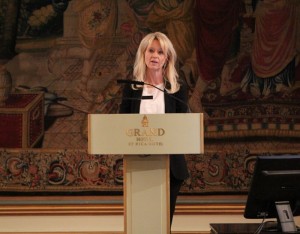SEB, Handelsbanken beat Q2 forecasts, Sweden stands out
Jul 17th, 2014
SEB and Handelsbanken exceeded consensus expectations with second quarter results reported this week, while Nordea’s came in slightly below, in results that a Kepler Cheuvreux analyst said reflected the banks’ geographic business mixes.
SEB was the first of the Swedish banks to announce second quarter results, on Tuesday revealing operating profit of Skr5.3bn (Eu573m), 5% ahead of consensus expectations*.
It was Svenska Handelsbanken’s and Nordea’s turn this (Thursday) morning, with Handelsbanken reporting pre-tax profit of Skr5.1bn, 7% above consensus expectations, and Nordea announcing pre-tax profit of Eu1.12bn, excluding a restructuring charge of Eu190m related to redundancies in an ongoing cost reduction programme. Nordea’s pre-tax profit came in 5% below consensus expectations.
Mats Anderson, equity research analyst at Kepler Cheuvreux, said that overall, Handelsbanken’s and SEB’s second quarter results exceeded consensus expectations, while Nordea’s fell a little bit short, except in relation to costs, which were better than expected.
“That reflects the geographic business mix of the banks,” he said. “Sweden is performing well, while Finland is still a concern and Denmark although stabilising is still sluggish, and that counts against Nordea.”
In general, he said, the banks are delivering net interest income that is in line to marginally below consensus expectations as it is under pressure from lower interest rates.
Commission generation and trading income, meanwhile, are in good shape, reflecting stable retail franchises but also increased corporate activity, according to Anderson.
“That is the most important thing, and very good news indeed,” he said. “The increased corporate activity illustrates a better economic cycle, especially in Sweden where the economy has picked up in 2014 and looks set to grow in 2015, too.”
The banks are also delivering on expectations when it comes to costs, according to Anderson, with credit quality very high.
Commenting on SEB’s results, Annika Falkengren (pictured), president and chief executive officer at SEB, noted that Nordic and German corporate and capital market activities, including IPOs and tenders, have increased, illustrating that business sentiment has turned more positive.
“However, we are experiencing extraordinary times with very low inflation, low interest rates and more than six years of central bank liquidity support in the euro-zone and the US,” she added.
SEB’s operating profit of Skr5.3bn represents a 10% increase on the second quarter of 2013 (Skr4.8bn). The bank reported second quarter revenues of Skr11.1bn, and expenses of Skr5.5bn.
“SEB’s investments in its client business have created a stronger, more stable and efficient platform,” said Falkengren. “As a consequence, our result displays the higher activity in the corporate and capital markets in the Nordic countries.
“Our diversified business contributed to a broad-based increase in operating income, up by four per cent while operating expenses decreased by one per cent.”
Svenska Handelsbanken’s operating profit of Skr5.1bn is a 3% increase on the second quarter of 2013. It reported revenues of Skr9.6bn, net interest income of Skr6.704m, a loan loss ratio of 6bp, and return on equity of 15.1%. Common Equity Tier 1 (CET1) increased by 0.6 percentage points to 20.1%, with the bank’s total capital ratio, under CRD IV, increasing from 24.5% to 25%.
In addition to pre-tax profit of Eu1.12bn, Nordea reported revenues of Eu2.47bn and net interest income of Eu1.37bn. Return on equity was 12% in the second quarter and the loan loss ratio was down from 18bp in the first quarter to 16bp.
Costs amounted to Eu1.39bn, including the restructuring charge. Adjusted for the charge the costs are 3% better than the consensus expectations, according to Anderson.
CET1 stood at 15.2%, at the end of the second quarter, an increase of 60bp, according to Christian Clausen, chief executive officer at Nordea.
“The second quarter of 2014 was characterised by a continued inflow of customers and strong activity, particularly in our savings area and corporate advisory business,” he said. “Income is holding up well, despite low lending demand, low interest rates and low volatility, and we continue to execute on our cost and capital efficiency programmes.
“Underlying costs are down in local currencies and cost to income ratio is 49%.”
Like officials at the other banks, Clausen referred to a May announcement from the Swedish FSA on the treatment of capital buffers and Pillar 2 requirements, saying that Nordea, “based on what we know today”, will need a CET1 ratio of around 15%, including a management buffer.
“The Board’s ambition to increase the pay-out ratio in 2014 and 2015 is reconfirmed,” he said.
Handelsbanken noted that the size of the Pillar 2 surcharge is “the chief remaining uncertainty factor” in the assessment of the final CET1 capital requirement, but said that, taking into account future regulations, it considers the Group to be well-capitalised.
Finansinspektionen, the Swedish FSA, is expected to announce detailed capital regulations in the autumn.
*Kepler Cheuvreux, company, Inquiry








